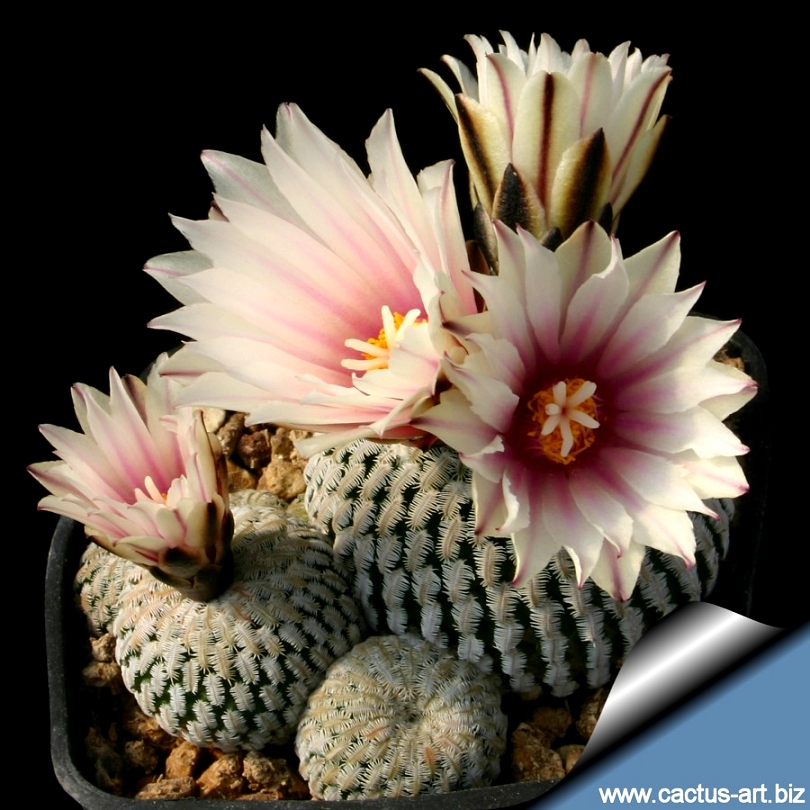Turbinicarpus is a genus of small, often enigmatic cacti native to the arid regions of Mexico, specifically the states of Nuevo León and San Luis Potosí. These diminutive plants have garnered a dedicated following among enthusiasts for their unique morphology and striking beauty. This guide aims to delve into the intriguing characteristics, aesthetic appeal, and cultivation of Turbinicarpus, making it an essential resource for both novice and experienced horticulturists alike.
The allure of Turbinicarpus begins with their distinctive appearance. Unlike many other cacti with their conventional cylindrical forms, Turbinicarpus showcases an array of fascinating shapes. These include globular forms and elongated structures adorned with prominent ribs. The unique characteristic that piques the interest of collectors is the presence of deeply lobed ribs that create an intriguing spiral or corkscrew appearance in certain species. This morphological peculiarity not only serves as a conversation starter but also contributes to its aesthetic appeal in various horticultural arrangements. The delicate balance between form and color adds layers of visual intrigue, making these cacti a focal point in any collection.
Beyond their captivating shapes, Turbinicarpus is renowned for its splendid blossoms. The flowers of these cacti are often small but disproportionately vivid, appearing in shades ranging from vibrant pink to radiant yellow. They typically emerge from the apex of the plant, contrasting magnificently with the usually muted hues of the cactus itself. This stark juxtaposition between the understated body of the cactus and the exuberant floral display elevates the overall aesthetic, rendering it a living masterpiece of nature. The flowering season often varies by species, but the sight of a Turbinicarpus in bloom evokes a sense of wonder that is hard to rival.
Caring for Turbinicarpus offers both challenges and rewards, making it an exciting venture for plant enthusiasts. Understanding their natural habitat is crucial for replicating the optimal conditions in which they thrive. These cacti flourish in rocky, well-draining soils typical of their native home. Thus, a specialized cactus mix that emphasizes drainage is often recommended. Consider incorporating materials such as perlite or coarse sand to enhance aeration. The medium should retain minimal moisture, as Turbinicarpus is particularly sensitive to overwatering, which can prove fatal.
Light is another critical factor in the care regimen of Turbinicarpus. These cacti favor bright, indirect sunlight or filtered light. While they can endure direct sun exposure, it’s essential to acclimatize them slowly to prevent sunburn. A south-facing window is often ideal for maintaining optimal light conditions. For those cultivating these plants indoors, utilizing grow lights can successfully mimic the natural sunlight levels they crave.
Temperature plays an equally pivotal role in the well-being of Turbinicarpus. They prefer warmer conditions and are not frost-tolerant. Therefore, if you reside in a region with cooler winters, providing indoor shelter or a protective greenhouse environment is advisable. The ideal temperature range for Turbinicarpus lies between 70°F to 90°F during the growing season, with nighttime temperatures not dipping below 50°F. During the winter months, a period of dormancy is observed, and reducing watering significantly aligns with their natural lifecycle.
One of the most captivating aspects of Turbinicarpus cultivation is their unique reproductive strategy. Pollination often involves the assistance of nocturnal pollinators, particularly certain moth species attracted by the fragrance of the flowers. This ecological relationship emphasizes the interconnectedness of flora and fauna in these arid regions. Cultivators may find joy in hand-pollinating their plants to encourage the development of seed pods, thereby participating in a fascinating aspect of their growth cycle.
Propagation methods for Turbinicarpus typically include seed and offset propagation. Seeds can be harvested from mature plants, but it is essential to allow them to dry before sowing. The seeds benefit from a stratification process, which mimics the natural conditions required for germination. Offsets, or pups, that develop at the base of a mature plant, can also be gently removed and replanted. This method often yields faster growth, as the offset has already developed a root system.
The aesthetic appeal of Turbinicarpus extends beyond their form and floral displays. Their relatively small size lends them to versatile decorative uses. They can thrive in a variety of settings, from minimalistic terrariums to larger, more eclectic arrangements featuring contrasting succulent species. Placing Turbinicarpus among other succulents can create visually enticing displays that showcase diverse textures and forms, enhancing the overall aesthetic of the space.
For those dedicated to the world of cacti, Turbinicarpus presents an alluring combination of rarity and beauty. Many species within this genus are considered endangered due to habitat loss and illegal collection. By promoting ethical cultivation practices and conservation efforts, enthusiasts can contribute to the preservation of these remarkable plants for future generations. Supporting nurseries that specialize in ethically sourced plants ensures that a balance is maintained between appreciation and protection of the natural environment.
As with any specialized plant collection, embracing the intricacies of Turbinicarpus leads to a rewarding experience enriched by learning and growth—not just for the cacti themselves but also for their caretakers. With each new bloom, each successful propagation, and even through the challenges of care, the engagement deepens and the connection with these cactus marvels becomes more profound.
In conclusion, Turbinicarpus embodies the essence of captivating beauty in the cacti family through its unique morphology, vibrant flowers, and rewarding cultivation experiences. Its growing popularity among enthusiasts illustrates a broader appreciation for the subtleties and complexities of plant life. Identifying and nurturing these striking specimens is not merely a pastime; it becomes an exploration of nature’s artistry.

Leave a Comment